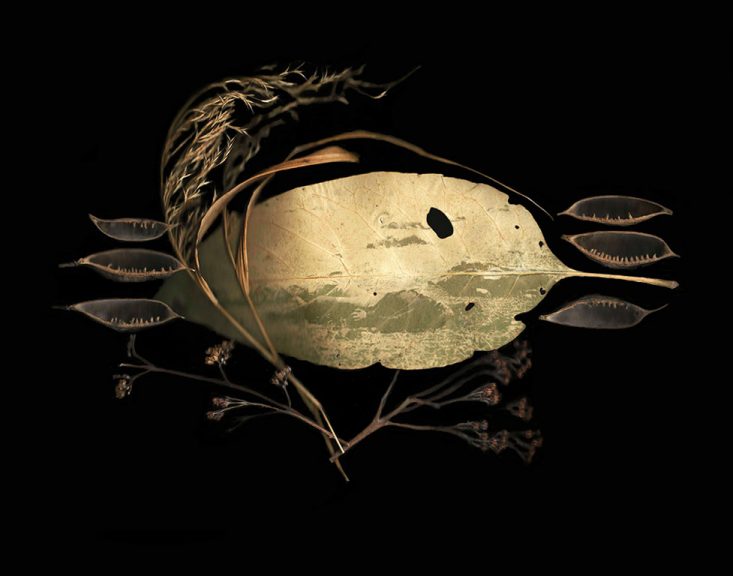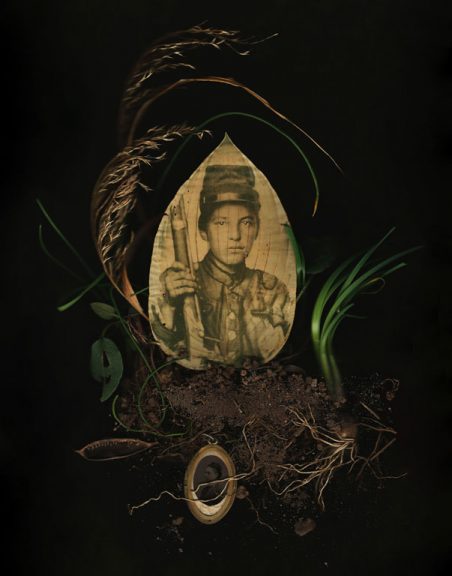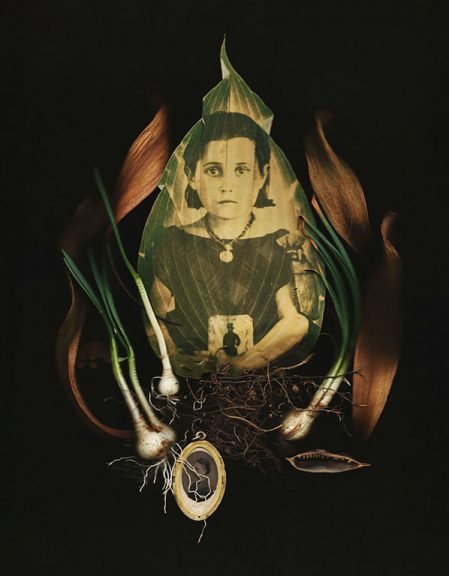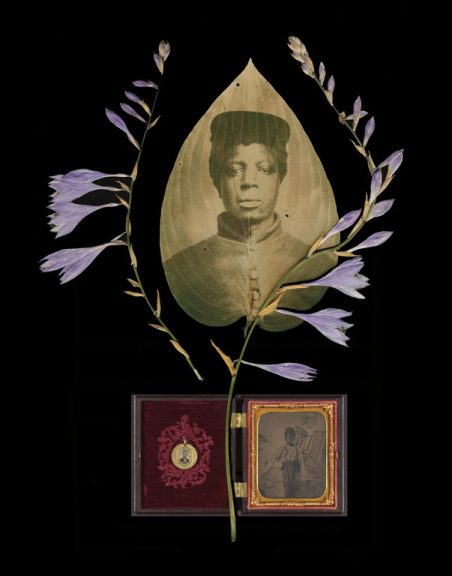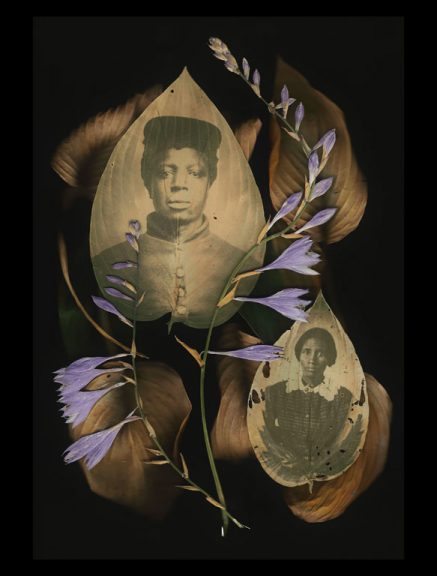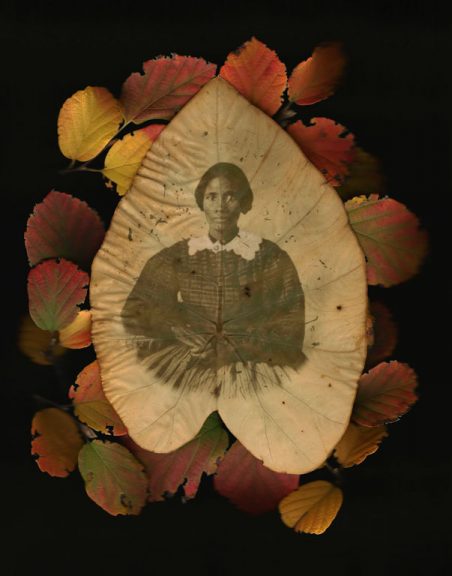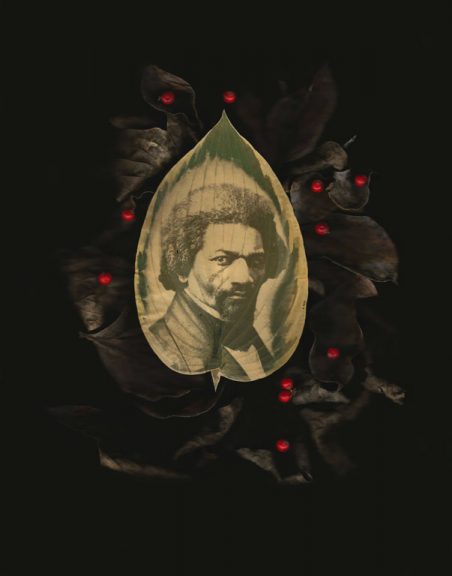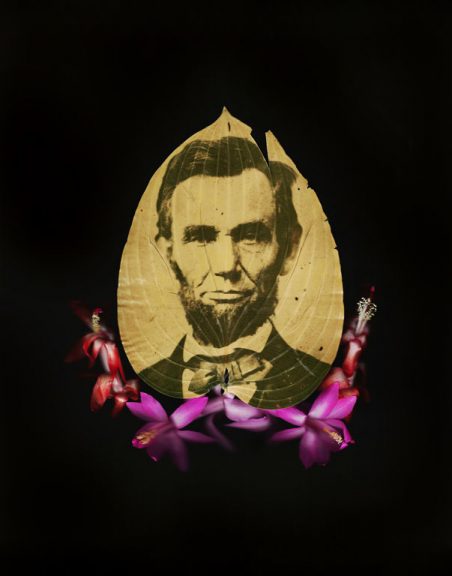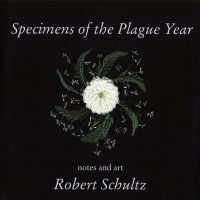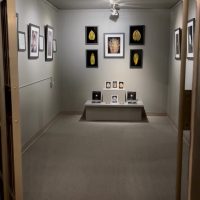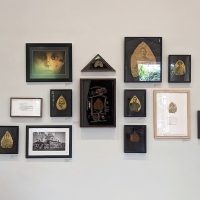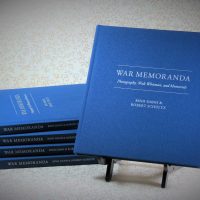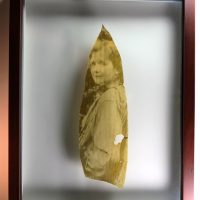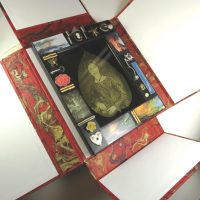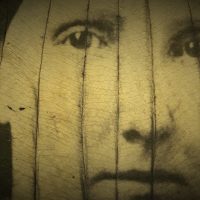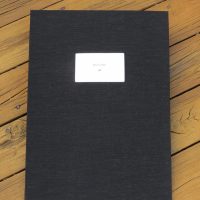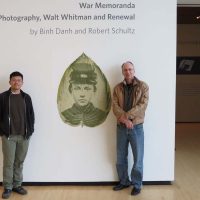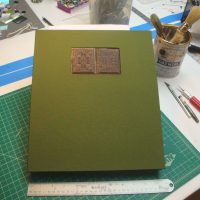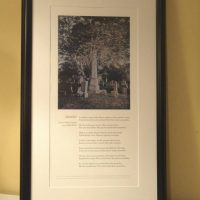How the Dead Speak
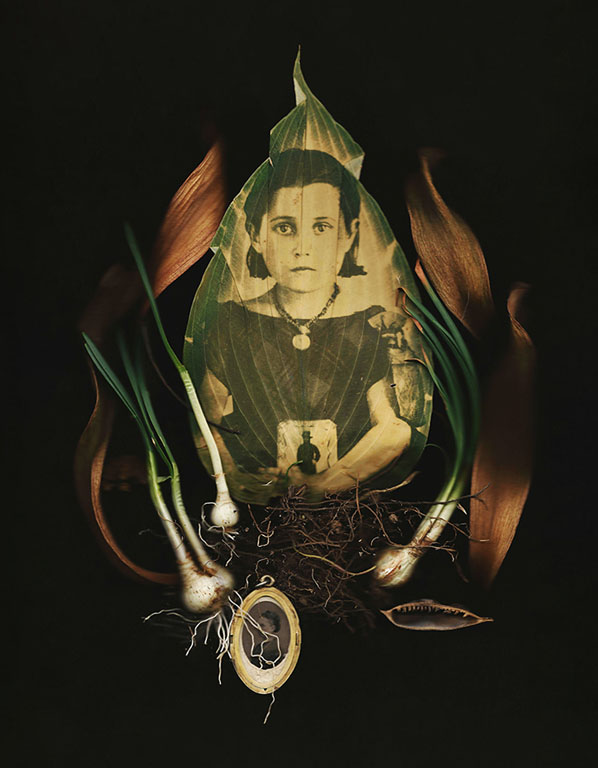
Especially in old portraits we experience the inherent paradox of photography, a simultaneous sense of elegy and resurrection.
The historical portrait testifies to the actual existence of the pictured individual—seizes this person from the flux of time and accomplishes a kind of resurrection—yet, at the same time, the image stands as elegy to the mortal, passing body.
In “How the Dead Speak” I have scanned chlorophyll prints in compositions with plant specimens and other elements. The chlorophyll prints are made using portraits appropriated from the Liljenquist Family Collection of Civil War photographs held at the Library of Congress and portraits of Walt Whitman, who ministered to the sick and wounded in Washington, DC’s wartime hospitals.
The central metaphor of Whitman’s Leaves of Grass is the guiding trope of the series: “Tenderly will I use you, curling grass, / It may be you transpire from the breasts of young men, / It may be if I had known them I would have loved them.” For Whitman, and now for me, the grass and leaves are “hieroglyphics” and “uttering tongues” speaking elegies in spring’s renewals. In this series I am interested also in how a repeated element—an amulet, a seed pod—can imply narrative.
